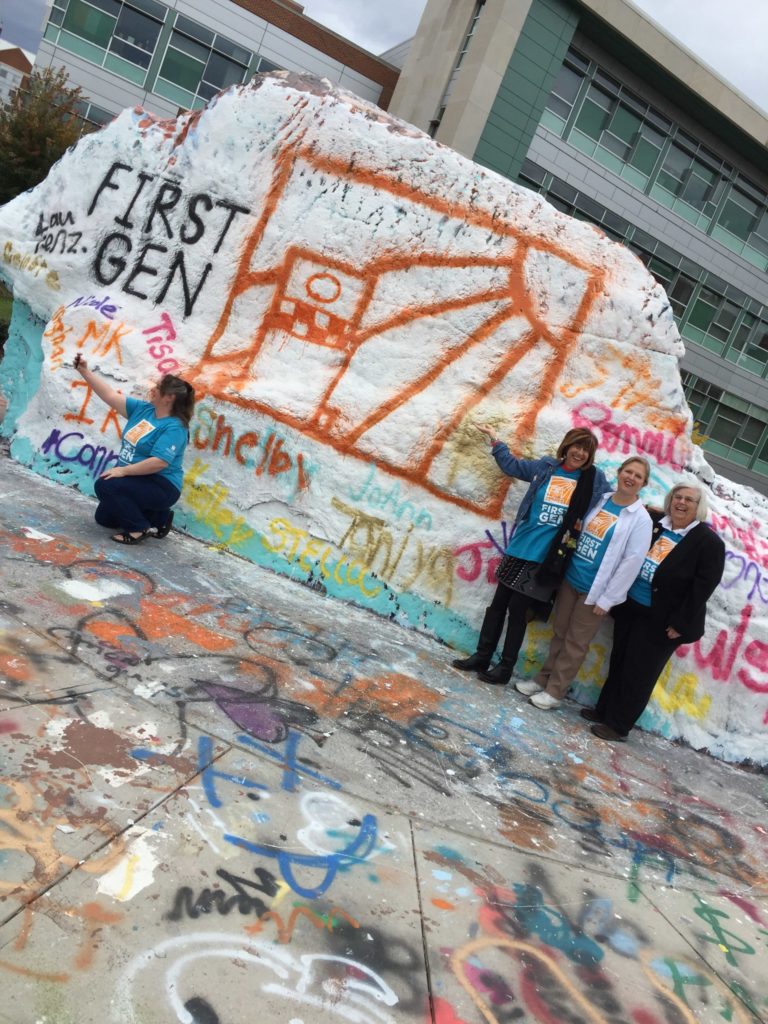Written by Kristin Rearden, clinical professor of STEM education / science.
In Spring 2020, Theory & Practice in Teacher Education (TPTE) honored three retiring faculty members:
JoAnn Cady, professor of mathematics education; Pattie Davis-Wiley, professor, of world language and English as a Second Language (ESL) education; and Blanche O’Bannon, professor of educational technology.
These faculty members had a combined service record of 75 years at UT. We asked them to reflect on their experiences as they looked back on their careers, and let us know their plans for retirement.
What was your favorite course to teach at UT and why?
Cady: My favorite course to teach was Mathematics Education 522: Programs and Materials. This course included prospective teachers at the K-12 level. I developed or adapted several activities that challenged the mathematics of the high school teachers but were still accessible to the elementary teachers. We explored the use of hands-on activities to represent more complex abstract mathematics and a variety of ways to explain the same mathematical content.
Davis-Wiley: My most unique and memorable course was one in which I virtually linked students in a UT English as a Second Language (ESL) methods class with students at the Chuncheon National University of Education (CNUE) in South Korea when I was a visiting scholar professor there spring of 2011. I set up both classes in a virtual learning community (VLC) and used Skype to teach the UT ESL methods class on Wednesdays evenings with the South Korea section on Thursday mornings.
O’Bannon: My favorite course to teach was Instructional Technology: 570 Instructional Systems Design. This was my favorite course because I was able to watch the growth of many graduate students as they planned, designed, and developed fabulous units of instruction.
Describe the biggest change you’ve seen in education.
Cady: To me, the biggest change in education is the way assessments are now being used. Previously, tests were used by teachers to determine students’ strengths and weaknesses. Instruction was then tailored to build on students’ strengths to alleviate students’ weaknesses. The current emphasis on assessment to determine failing schools is misaligned with best educational practices.
Davis-Wiley: I am no stranger to technology, and have enthusiastically embraced its integration into PreK-16 curricula in both the physical and virtual classroom. Twenty-first century technology is not the way of the future; it is now a proven and ubiquitous medium for instructional delivery in today’s educational arena.
O’Bannon: During my doctoral program in the early 1990s, instructional technology was in the beginning stages. We used five-inch floppy discs, for example. Technology has changed immensely since then, and these changes continue to impact the way we teach at the college
level. All students used to go to the university. With the shift to so many courses and programs being delivered online, now the university is going to the student.
What advice do you have for future teachers?
Cady: Even with its challenges, teaching is one of the most rewarding careers to enter. You never know when you will hear from a former student or parent about how much you influenced their life and you get to continue to learn from your students.
Davis-Wiley:
- Be competent and stay current with research in your content field(s) and integrate this vital knowledge into your instructional planning and delivery.
- Expect nothing less than excellence for yourself and set the proverbial bar high for your students as well.
- Be kind, patient, fair, and consistent with your students; they deserve it.
- When you can no longer do the above, have the courage to leave the classroom and shift to another career path.
O’Bannon: You may have a huge influence on the lives of children; don’t take that responsibility lightly.
What are your plans for retirement?
Cady: During retirement, I plan to volunteer at the local elementary and middle schools and at the local hospital’s First Steps program for new mothers. I will also be spending more time with my grandchildren and traveling near and far.
Davis-Wiley: Even as a Professor Emerita, I will always be a professor in my heart and soul. My post-retirement plans include continuing my research activities; staying active in state, regional, and national professional world language organizations; and maintaining my editorship of a peer-reviewed journal in world language education. My husband Steve and I will continue to spend a month in Cabo San Lucas every summer and three or four weeks in Southern California where I grew up over the winter holidays; take a few other jaunts and sojourns when the mood inspires us; continue to engage in water sport/golf activities and compete in target shooting events; and enjoy life, as we always have.
O’Bannon: I’m ready for a new chapter, but my plans are not set in stone yet. I plan to move to Nashville, spend time with friends and family, and then decide “what’s next.”


